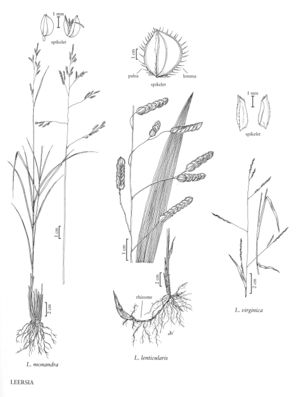Difference between revisions of "Leersia lenticularis"
FNA>Volume Importer |
imported>Volume Importer |
||
| (3 intermediate revisions by 2 users not shown) | |||
| Line 4: | Line 4: | ||
|publications= | |publications= | ||
|common_names=Catchfly grass;Oatmeal grass | |common_names=Catchfly grass;Oatmeal grass | ||
| + | |special_status={{Treatment/ID/Special_status | ||
| + | |code=E | ||
| + | |label=Endemic | ||
| + | }} | ||
|basionyms= | |basionyms= | ||
|synonyms= | |synonyms= | ||
| Line 38: | Line 42: | ||
|publication title= | |publication title= | ||
|publication year= | |publication year= | ||
| − | |special status= | + | |special status=Endemic |
| − | |source xml=https:// | + | |source xml=https://bitbucket.org/aafc-mbb/fna-data-curation/src/200273ad09963decb8fc72550212de541d86569d/coarse_grained_fna_xml/V24/V24_42.xml |
|subfamily=Poaceae subfam. Ehrhartoideae | |subfamily=Poaceae subfam. Ehrhartoideae | ||
|tribe=Poaceae tribe Oryzeae | |tribe=Poaceae tribe Oryzeae | ||
Latest revision as of 16:23, 11 May 2021
Plants perennial; rhizomatous, rhizomes moderately elongate, scaly. Culms 50-150 cm tall, 1-3 mm thick, usually ascending, unbranched or branched; nodes retrorsely hispidulous, adjacent portion of the internodes glabrous. Sheaths glabrous or scabrous; ligules 0.5-1.5 mm; blades 4-35 cm long, 5-22 mm wide, spreading to somewhat ascending, abaxial surfaces glabrous or scabridulous, adaxial surfaces glabrous or pubescent, margins usually scabrous. Panicles 4-25 cm, exserted, with 1(2) branches per node; branches 8-15 cm, spreading, secund, lower branches naked on the lower 73, spikelets strongly imbricate. Spikelets 4-5.5 mm long, 3-4 mm wide, broadly elliptic to suborbicular. Lemmas coarsely ciliate on the keels, variously pubescent on the margins and body, mucronate; paleas ciliate on the keels; anthers 2. Caryopses 3.5-4 mm, reddish-brown. 2n = 48.
Distribution
Md., Tenn., Okla., Miss., Tex., La., Mo., Minn., Ala., Wis., Kans., N.C., S.C., Va., Ark., Ill., Ga., Ind., Iowa, Ky., Fla., Ohio
Discussion
Leersia lenticularis grows in river bottoms and moist woods of the midwestern and southeastern United States. It flowers from July to November. Ohio and Maryland list it as an endangered species.
Selected References
None.
